The term "Hydrogen Economy" refers to the infrastructure to support the energy requirements of society, based on the use of hydrogen rather than fossil fuels.
The concept of using hydrogen as an energy system is not new; it has previously been used both industrially and domestically (town gas - 50% hydrogen was used in the UK until the 1950's). Interest in hydrogen as a vehicle fuel dates back to the 1800's but heightened in the 1970's with the oil crises and with technological advances in the 1980's.
Indeed, according to Jules Vernes (1870)
I believe that water will one day be employed as fuel, that hydrogen and oxygen which constitute it, used singly or together, will furnish an inexhaustible source of heat and light, of an intensity of which coal is not capable. I believe then that when the deposits of coal are exhausted, we shall heat and warm ourselves with water. Water will be the coal of the future
The hydrogen economy is a network of primary energy sources linked to multiple end uses through hydrogen as an energy carrier. Hydrogen adds flexibility to energy production and use by linking naturally with fossil, nuclear, renewable, and electrical energy forms: Any of those energy sources can be used to make hydrogen but it makes virtually no sense to use fossil inputs to make hydrogen. As we will see later, the current key limitation in implementing a hydrogen economy is not production, but storage
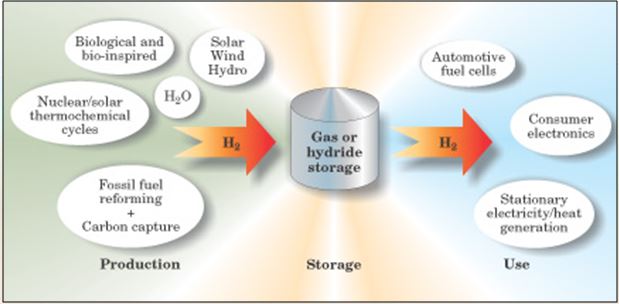
Hydrogen is a good candidate for reducing emissions since when it is reacted with oxygen it produces only water as the reaction product. Hydrogen can be used to provide electricity and heat either through use in a fuel cell or combustion. A fuel cell generates electricity by combining hydrogen with oxygen from air; the only by-product is water. Hydrogen can also be burned in an internal combustion engine in the same way as petrol or natural gas. This produces water as the main by-product, however, small amounts of oxides of nitrogen (air pollutants) are also produced.
Unlike oil, gas and coal hydrogen doesn't exist in large quantities in nature in a useful form. Like electricity it is an energy carrier, which must be produced using energy from another source. At present, nearly half the hydrogen produced in the world is derived from natural gas via a steam-reforming process. The natural gas reacts with steam in a catalytic converter. The process strips away the hydrogen atoms, leaving carbon dioxide as the by-product. Therefore, in the future, hydrogen must be produced from renewable energy sources. The image below is a schematic representation of Hydrogen infrastructure.
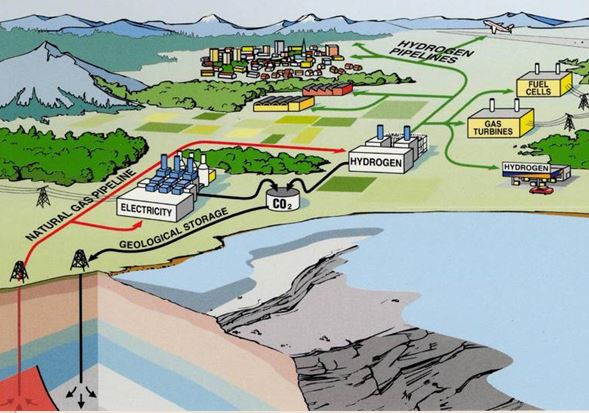
Operational implementation of the Hydrogen Economy, however, consists of various physical scale limitations that need to be overcome through improved technology. These limitations are
basically shown as the middleware between production and end use.
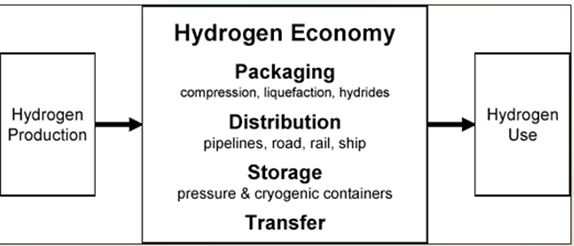
Like any other product, hydrogen must be packaged, transported, stored and transferred, to bring it from production to final use. These standard product processes require energy. In today's fossil energy economy, the energy lost between the well and the consumer is about 12% for oil and about 5% for gas. Currently the losses associated with the pictured middleware are qualitatively larger, but quantitative estimates remain uncertain.
Without question, technology for a hydrogen economy exists or can be developed. In fact, The cost of hydrogen is irrelevant as long as the final products find markets. Today, the use of hydrogen is governed by economic arguments and not by energetic considerations.
However, if hydrogen is to be used as an energy carrier, energetic issues must also be considered. How much high-grade energy is required to make, to package, to handle, to store and to transport hydrogen? It would be difficult to establish a sustainable energy future if much of the energy harvested from nature is wasted before it reaches the energy consumer. The key to overcoming this possible limitation will be the development of new systems for storing hydrogen on the molecular level.
The image below shows the various pathways to producing hydrogen. The only sensible ones, in terms of sustainability and reduced greenhouse gas emissions, are those that are green and
involve electrolysis (separation of H and O within water) as the mechanism to make hydrogen.
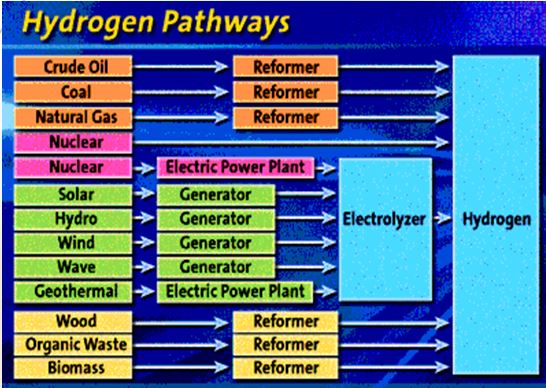
Currently, almost all of the hydrogen that is produced on a world wide basis comes from fossil inputs and is for specialized purposes (industrial and commercial uses).
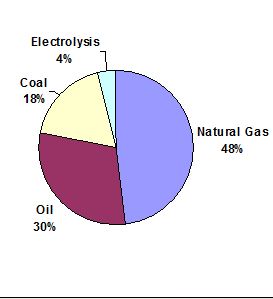
Electrolysis of water to produce hydrogen and oxygen is a relatively simple concept (see below). Electrolysis of Sea Water can be done but requires special materials for the construction of the anode and cathode.
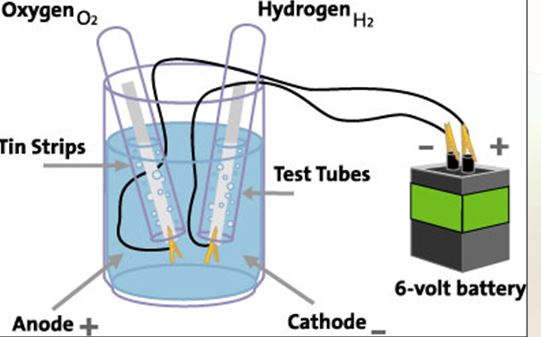
A wind to hydrogen to pipline project, for the purpose of producing hydrogen as a transportation fuel, might well look like the following, where a 500 MW wind farm
ultimately produces enough hydrogen to power 35,000 cars per day in some urban center.
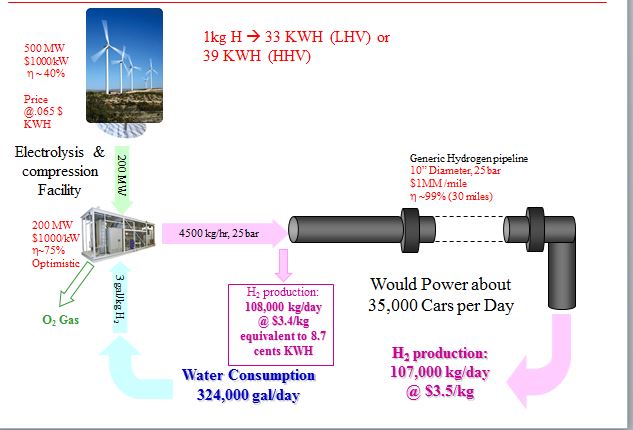
The hydrogen storage problem:
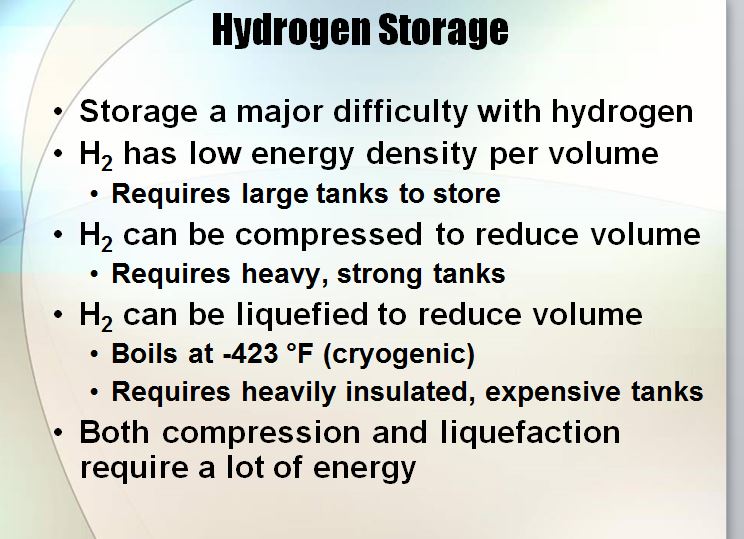
Storage is the main technological problem of a viable hydrogen economy. Some attention has been given to the role of hydrogen to provide grid energy storage for unpredictable energy sources, like wind power. The primary difficulty with using hydrogen for grid energy storage is that converting power to hydrogen and back is not cheap.
Hydrocarbons are stored extensively at the point of use, be it in the gasoline tanks of automobiles or propane tanks hung on the side of barbecue grills. Hydrogen, in comparison, is quite expensive to store or transport with current technology. Hydrogen gas has good energy density per weight, but poor energy density per volume versus hydrocarbons, hence it requires a larger tank to store. A large hydrogen tank will be heavier than the small hydrocarbon tank used to store the same amount of energy, all other factors remaining equal. Increasing gas pressure would improve the energy density per volume, making for smaller, but not lighter container tanks (see pressure vessel).
Compressing a gas will require energy to power the compressor. Higher compression will mean more energy lost to the compression step. Alternatively, higher volumetric energy density liquid hydrogen may be used. However the liquefaction process imposes a large energy loss, used to cool it down to that temperature. The tanks must also be well insulated to prevent boil off. Ice may form around the tank and help corrode it further if the insulation fails. Insulation for liquid hydrogen tanks is usually expensive and delicate. Assuming all of that is solvable, the density problem remains. Even liquid hydrogen has worse energy density per volume than hydrocarbon fuels such as gasoline by approximately a factor of four.
Nanotechnology to the rescue! One possible energy transition plan is shown below:
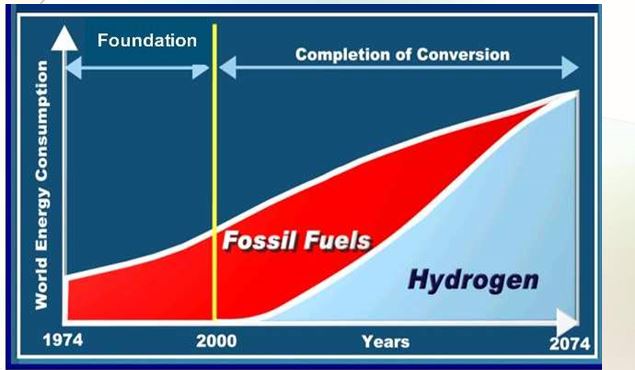
To achieve this will require a scalable storage system for hydrogen. A lot of research and development is now occurring in the area of designer molecular cages into which individual hydrogen molecules (or atoms, a hydrogen molecule is simply 2 hydrogen atoms bonded together) can be injected and temporarily stored and transported within the material. Indeed, this is the only technical solution that leads to scalability of hydrogen storage. Liquifaction and compression are simply not scalable solutions.
So pay attention to the idea of the Hydrogen NanoHorn which represents a molecular device cable of containing large numbers of hydrogen atoms - since hydrogen is so light, its presence within the container does not significantly change the mass of the container.
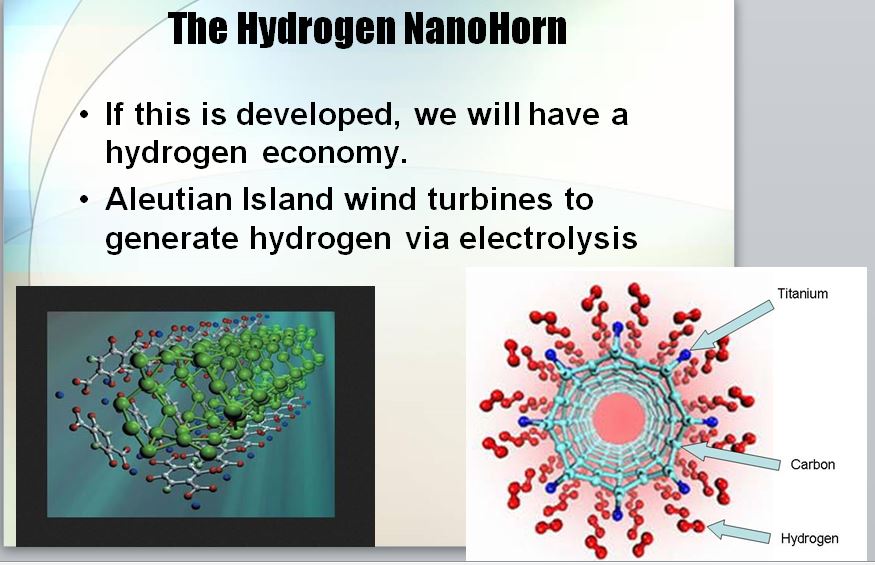
Without the ability to store significant amounts of hydrogen atoms in a relatively small place, there will be NO hydrogen economy, Hyrdogen will simply remain as a niche application in places like Iceland where free Geothermal Steam can be used as the hydrogen production pathway.

In sum, the potential of a worldwide transportation economy based on hydrogen as the fuel source where the hydrogen is produced by renewable energies (wind drive electrolysis, Solar thermal production of hydrogen , etc) has wide spread appeal. At the moment we are far from realizing this potential as a) we have no dedicated hydrogen production from renewables and b) we have no easy way to store and transport
hydrogen from these remote sites (e.g. the Aleutian Islands). However, if hydrogen nano storage becomes a reality then that will enable a hydrogen economy that you may well see in your lifetime.
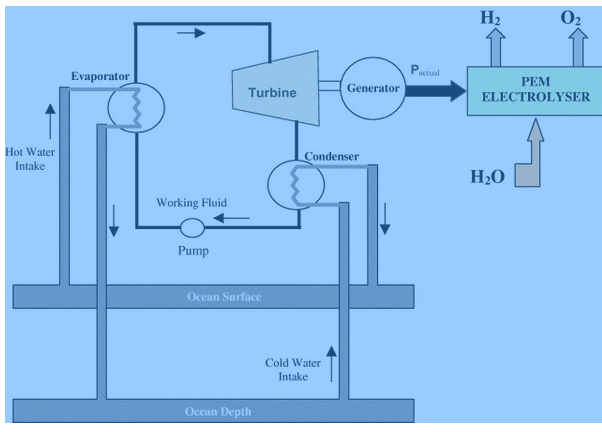
OTEC and H production
Something to hope for that can scale up (Initially designed for disaster relief)
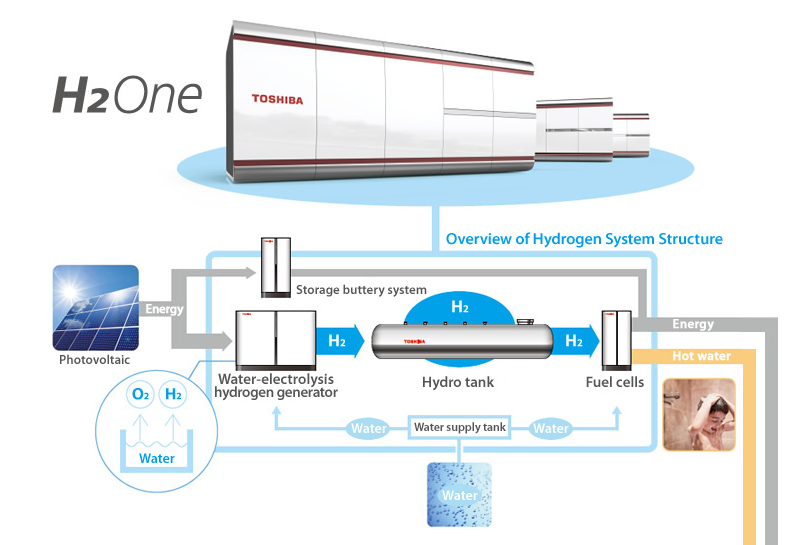
- Charge up system in "desert" - transport to some location.
- Stores 350 KWH per unit. That could power 10 houses for 35 hours.
|